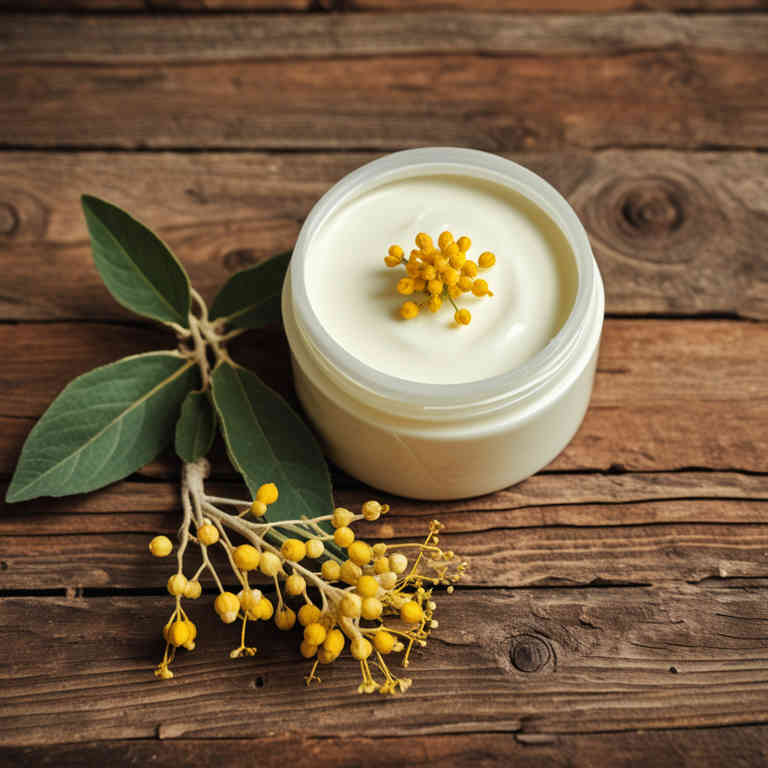Hypericum perforatum cream for medicinal use

Hypericum perforatum cream is a topical herbal preparation made from the crushed leaves of the St. John's Wort plant.
It is commonly used in herbalism to treat minor burns, wounds, and skin irritations due to its anti-inflammatory and antiseptic properties. The cream helps to soothe pain and promote healing by reducing inflammation and preventing infection. It is often applied directly to the affected area several times a day.
This preparation is valued for its natural approach to skin care and its historical use in traditional medicine.
Uses
Hypericum perforatum cream has been used to treat various skin conditions and promote wound healing for centuries.
Historically, it was used in traditional medicine by ancient Greeks and Romans for its purported healing properties. In traditional herbal practices, it was also applied to soothe burns, insect bites, and other minor skin irritations. Modern research suggests that the cream may have anti-inflammatory and antimicrobial properties, supporting its use in dermatological treatments.
Today, it is commonly found in over-the-counter topical products for its potential to aid in skin recovery and reduce inflammation.
Benefits
Hypericum perforatum cream has health benefits such as reducing pain and inflammation associated with minor skin irritations, eczema, and psoriasis.
It is derived from the St. John's Wort plant, which contains compounds like hyperforin and hypericin that have anti-inflammatory and antioxidant properties. This cream can help soothe skin conditions by promoting healing and reducing redness. It is often used topically to alleviate symptoms of sunburn and minor wounds.
However, it should be used with caution as it may interact with certain medications.
Constituents
Hypericum perforatum cream active constituents include hypericin, hyperforin, flavonoids, tannins, and essential oils.
These compounds are known for their antidepressant, anti-inflammatory, and analgesic properties. Hypericin is believed to influence neurotransmitters such as serotonin and dopamine, while hyperforin may enhance the reuptake of neurotransmitters. The cream is often used to alleviate symptoms of mild depression, seasonal affective disorder, and nerve pain.
It is also thought to have wound-healing and antiviral benefits due to its broad spectrum of bioactive compounds.
Preparation
To make Hypericum perforatum cream, you will need fresh or dried Hypericum perforatum (St. John's Wort) flowers, a base of coconut oil or shea butter, and beeswax for consistency.
Begin by grinding the dried flowers into a fine powder and simmering them in a small amount of water to extract the active compounds. Strain the liquid and combine it with the oil or butter base, then melt the beeswax and mix it in to achieve a creamy texture. Allow the mixture to cool and solidify before storing it in a cool, dark place.
This cream can be used topically to soothe skin irritations and may offer mild anti-inflammatory benefits.
Side Effects
Hypericum perforatum cream may lead to skin irritation, redness, or a burning sensation in some individuals.
It is derived from St. John's Wort, which is commonly used for its antidepressant properties. However, this cream can interact with certain medications, potentially reducing their effectiveness or increasing side effects. Possible side effects include photosensitivity, headaches, and gastrointestinal discomfort.
It is important to consult a healthcare professional before using this preparation, especially if you are on other medications.